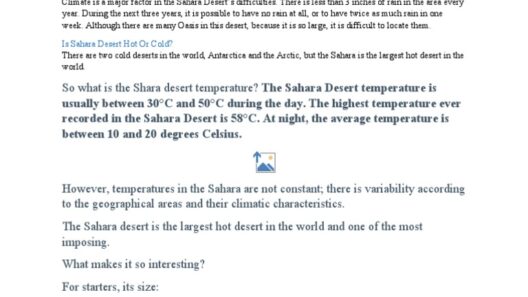Saturn, the sixth planet from the Sun and the second-largest in the solar system, captivates the imagination of many with its majestic rings and unique atmosphere. Yet, what truly lies within the mysteries of Saturn’s climate? A swirling tempest of gas, a cacophonous symphony of storms, and an atmosphere unlike any other, Saturn’s climatic conditions present a captivating field of study. What if we could transport ourselves to the heart of Saturn and witness its atmospheric phenomena firsthand? Could we unravel the enigmas hidden within its gaseous domain?
To understand Saturn’s climate, one must first grasp its atmospheric composition. The planet is primarily composed of hydrogen and helium, which together constitute more than 96% of its total mass. The atmosphere is a thick and vibrant tapestry of clouds, primarily made up of ammonia, methane, and water vapor. Each of these gaseous components contributes to a complex interplay that dictates the global climate. The composition is a driving force behind its meteorological phenomena, which are both captivating and tumultuous.
Diving deeper, one encounters the dynamic nature of Saturn’s winds. The planet experiences extraordinarily high wind speeds, reaching up to 1,100 miles per hour in its upper atmosphere. These relentless gusts contribute to the formation of persistent storms, some of which can be more than 1,000 times the size of those on Earth. One might wonder, how do the winds interact with the layers of gas and cloud formations? The answer lies in the intricate structure of Saturn’s atmosphere, which consists of different layers, each exhibiting distinct characteristics and behaviors, thereby influencing large-scale weather patterns.
Saturn’s atmosphere is not simply a static expanse of gas but an arena for colossal fluctuations. The planet is famous for its gigantic storms, which erupt sporadically and can last for months or even years. The Great White Spot, for instance, is a tremendous storm that circulates within Saturn’s atmosphere, reminiscent of a massive hurricane. Such storms are often characterized by their intense pressure systems and spiraling cloud formations. They serve as an excellent example of the planet’s robust climatic dynamics, where temperature variations and pressure imbalances conspire to birth extraordinary meteorological events.
The challenges posed by Saturn’s climate extend beyond mere observation. Scientists grapple with the complexities of understanding how its weather systems function. The planet’s rapid rotation—one day on Saturn lasts only about 10.7 hours—creates an intricate relationship between its equator and polar regions. Consequently, researchers strive to decipher how these disparities in rotation contribute to Saturn’s unique weather patterns. Can we truly comprehend the magnitude of these forces in play, or do they transcend our earthly understanding?
Moreover, Saturn’s appearance is an enchanting reminder of its unique atmospheric conditions. The mesmerizing rings, composed of ice and rock particles, serve not only as a visual spectacle but also affect the climate in subtle yet significant ways. The rings impact Saturn’s atmosphere by casting shadows and altering temperature distributions. This interaction creates localized weather phenomena, further complicating the climatic tapestry of the planet. One might ask: how critical are these rings in shaping the entire atmospheric character of Saturn? The answer could lead to insights about climate in both extraterrestrial and terrestrial contexts.
As we delve further into Saturn’s atmospheric phenomena, one cannot ignore the impact of seasonal changes. Saturn experiences seasons akin to Earth, but the length and intensity differ due to its axial tilt of approximately 27 degrees. Each season lasts about 7 Earth years, allowing for prolonged periods of climatic transformation. During these transitions, the atmospheric composition may change, as storms intensify and dissipate, leading to an evolution of the climate itself. How do these prolonged cycles inform our understanding of atmospheric science beyond our planet?
Another fascinating aspect lies in Saturn’s potential for atmospheric lightning. Disparate from Earth, lightning on Saturn reveals itself within its storm systems, igniting with ferocity during periods of heightened storm activity. The presence of electrical discharges within the clouds suggests complex interactions between the planet’s gaseous elements. Scientists speculate on the frequency and energy output of these lightning strikes, prompting questions about the underlying mechanisms driving such phenomena. What secrets does Saturn’s atmospheric electricity hold for our knowledge of planetary weather systems?
Saturn’s climate also provides a stark contrast to Earth, particularly in terms of pressure and temperature. The atmospheric pressure can exceed 100 times that of Earth’s at sea level, with frigid temperatures plummeting to -288 degrees Fahrenheit. Such extremes challenge our comprehension of habitability and climate systems. It beckons the question: can life as we know it endure in such alien environments? The exploration of Saturn and its climate presents an opportunity to rethink the capabilities of life and the adaptability of organisms in extreme conditions.
In pondering the complexities of Saturn’s climate, we are invited to confront the broader implications of our understanding of climate. The study of extraterrestrial atmospheres enriches our perspective and potentially informs solutions to the climate crises we face on Earth. As we explore Saturn’s atmosphere, we are reminded of the interconnectedness of all planetary systems and the urgent need to prioritize climate awareness and sustainability.
In conclusion, while the climate of Saturn is a mélange of wonders, it simultaneously poses challenges and questions that ignite our curiosity. From the colossal storms to the shadowy influence of the rings, Saturn’s atmosphere is a realm of extreme conditions and intricate dynamics. As we continue to probe deeper into its mysteries, we are called upon to reflect on our own planet’s climate, for the lessons learned from the gaseous titan may help us navigate the turbulent waters of climate change on Earth. Are we prepared to heed Saturn’s message and embrace the enigma of our own climate challenges?






